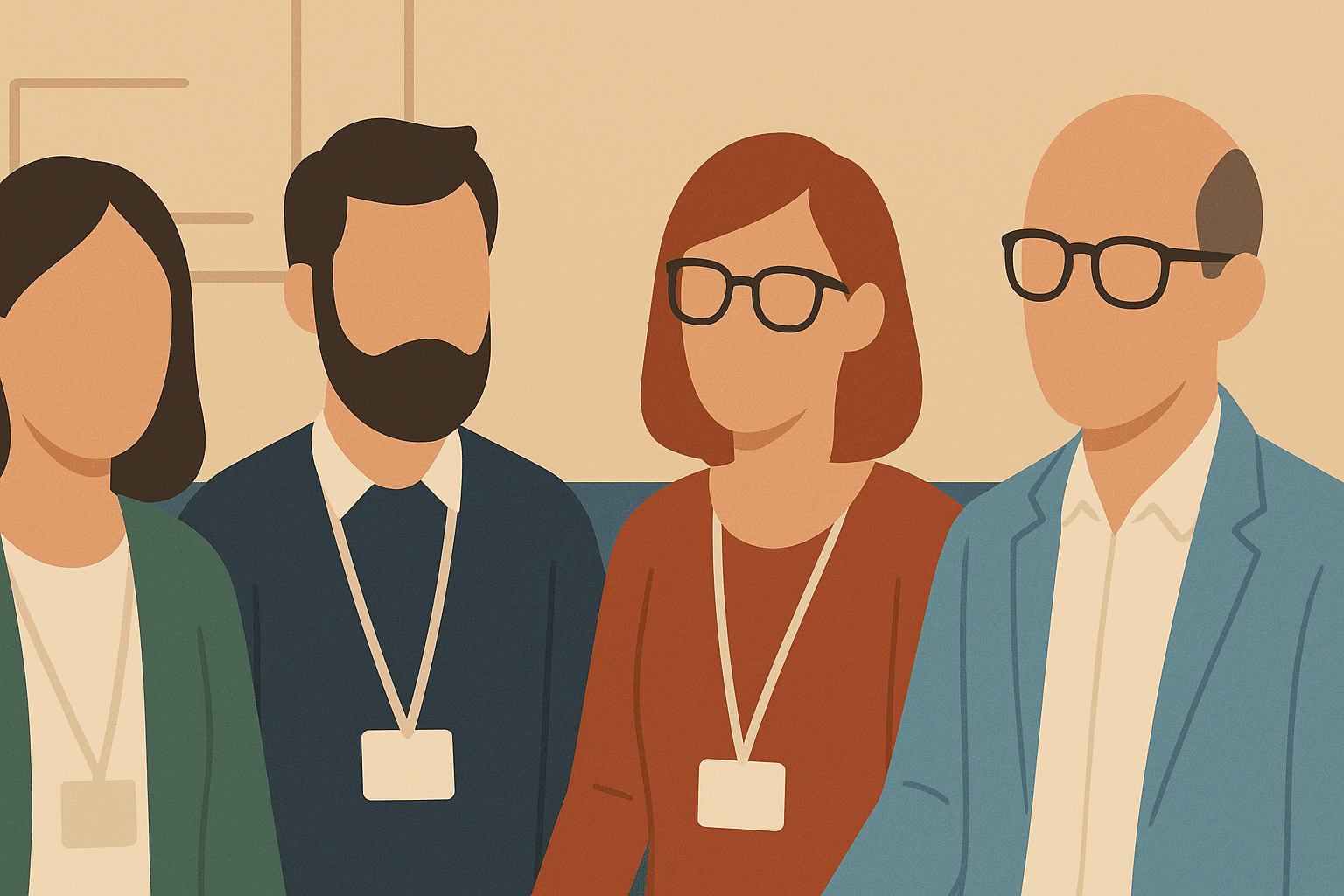A Guide Dog for the Face-Blind

Whatever the cause of cognitive overload, a personal intelligence can help
In my grad-school dorm there were four blind students, and they all coped in different ways. Most impressive was Jeff, whose wealthy family was able to provide him with key support technology, notably a talking computer (a bigger deal back then) and a guide dog (still a big deal today). Augmented with such technology, he did pretty well, and in some ways better than the rest of us—a golden labrador is a great tool for making acquaintance and conversation.
Many years later I discovered that I was also blind. I was at an Ethereum meetup, and this guy approached our group and said, “Sorry if I know any of you and don’t recognize you, but I’m face blind.” Stunned, I said, “Wait—tell me about this,” and he proceeded to explain prosopagnosia. Not that there was much that I needed to know except that it is a thing, it has a name, and I was not alone. But he mentioned a website with a face-blindness test, and I did score quite low, though not zero. My case is mild. Face-blindness is not a binary thing, but exists on a spectrum (as does color blindness). Prosopagnosics cope by noting salient features like hairstyle, glasses, and facial hair, which is why it makes us crazy when people change any of those things. The test shows famous people with these features removed. Speaking of famous people, there are some famous prosopagnosics, including psychologist Oliver Sacks and actor Brad Pitt. It sucks to be us. For example, it is hard to keep track of the characters in a movie if they are many and ethnically homogeneous. The German TV series Dark (where the numerous undistinctive characters were shown at different times in parallel timelines) particularly overflowed my registers.
It should be noted that everyone occasionally suffers from such cognitive overload. Anyone reading War and Peace will need at the very least a list of characters.
What prosopagnosics fear above all else is not recognizing someone who recognizes us. Most often this happens with a change of context, like seeing someone from work in the supermarket. It makes for some embarrassing moments. There is a woman who I have failed to recognize half a dozen times, because she lacks any distinguishing features, and each time she gets angrier. On the opposite end of the bell curve from us are super-recognizers, and we resent them, but at least they are more likely to be aware of the phenomenon.
Besides hair and glasses, we can use other features like voice. At conferences I am really keen on labeling, like name tags and asking where people are from. The geolocating does not exactly augment appearance, but I tend to remember people better on a map, or where they sat around a conference table. In the human mental contacts database, faces are normally the first part of the primary key, but not for prosopagnosics. For the ASIMOV Protocol startup I have been attending conferences about AI and knowledge representation–to recognize those participants again I would need my personal context window set appropriately.
Prosopagnosics and other sensory-impaired people need help: a personal-intelligence app like a technological guide dog. In this we are like everyone else, but with an emphasis on establishing identity.
First is biometric recognition. When recording a contact, such an app would include biometric data like a photo and maybe a voice sample, so as to display and recognize them later. When transcribing and analyzing an audio stream, this process of speaker identification is called diarization. Second would be recording other identity information. Third would be recording interactions and other information modeled as relationships in a knowledge graph. In struggling to keep track of excess information we are like everybody else, but imagine trying to mentally record information about a person when you are not sure who he is!
There are other sensory impairments that need AI assistance, e.g., other forms of blindness. Some 8% of males have red-green color blindness. People with autism cannot easily recognize emotions. People with dromosagnosia lose spatial orientation. The blind often suffer an embarrassing lack of privacy when they rely on other people to describe sensitive materials. And a similar number of people are deaf as are blind. All face diarization and other challenges to forming and using their internal knowledge graphs.
As memory and recognition challenges become more widely visible and understood, the case for discreet, respectful tools grows stronger. Prosopagnosics’ problems are not unique; they are just more visible versions of the overload we all feel. Projects like Positron from ASIMOV Protocol hint at what is possible: quiet intelligence that augments without intruding, remembers without judging, and lets us stay human in an increasingly digital world.
